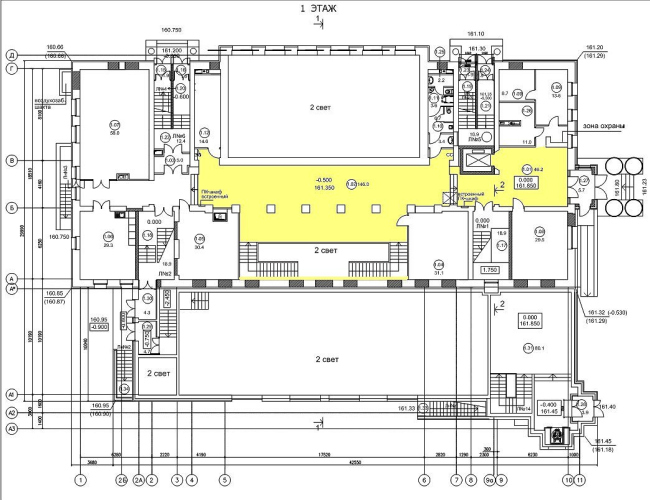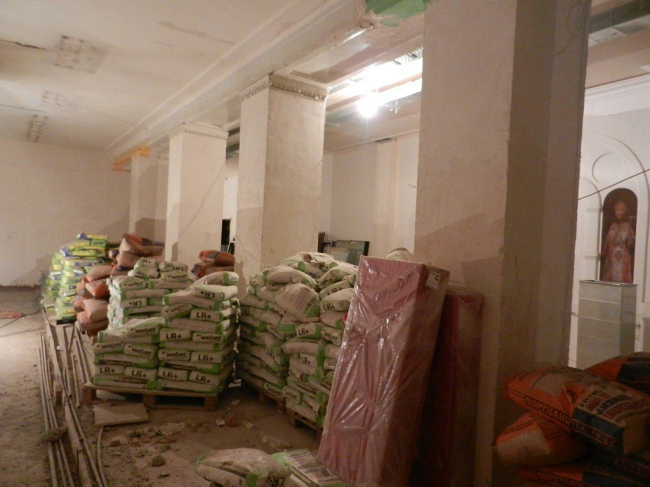|
Published on Archi.ru (https://archi.ru) |
|
| 26.07.2012 | |
|
Canon vs Modernity: Mission Possible |
|
|
Anna Martovitskaya |
|
| Studio: | |
| Sergey Estrin Architects | |
|
This spring, Sergey Estrin studio was invited to participate in the closed tender for the design project of Sretenskaya School of Theology. One of the mandatory requirements of the bid was the one for up-to-date solutions for the public spaces of this educational institution. The school of theology (or "seminary",
as it is called in Sergey Estrin shares that the image of the
interior spaces came to him once he got down to making his first sketches of
the project. To a large extent, it continues the tradition of the ascetic
interiors of the Sretensky Monastery itself, only this austerity here is
"retold" in the language of contemporary stylistic devices and
materials. An important part here was played by the initial condition of the
building: along the central axis of the main lobby, for example, there are very
massive rectangular columns that are impossible to take down. To offset these
rigid verticals, the architect laid a special stress on enhancing the
"hovering" - elevating - plastics of the walls and the ceiling. By using
the plates of white Corian that run in waves over the smooth surfaces, Sergey
Estrin not only softens the original geometry of the premises but also creates
a contemporary interpretation of such characteristic features of Russian temple
architecture as vaults and arches. The broad widths of this plastic material
alternate with the plates whose width is equal to that of the columns. The
former are interpreted as canvasses that can carry any "thematically
appropriate" image, while the latter zone the room down into smaller
segments, visually turning the monotonous corridor into a grand suite. This impression
is enhanced by the lights installed behind the plates - the dispersed light,
seemingly streaming from out of nowhere, not only adds to the solemnity of the
lobby but also to its resemblance to the monastery interiors. There are also other "borrowings"
from the temple architecture tradition that can be traced here: the tall
oval-shaped wooden doors, the apsis-shaped balcony, the backlit round
recessions in the ceiling that serve to simulate the dome drums, and the layout
of a canonic temple, inlaid on the marble floor. When it came to such an
indispensable part of the interior decoration of any temple as wall painting,
the architect offered two possible scenarios at once: for the authentic
artifacts (or screens that will display them) spaces on the columns are
reserved, while on the Corian "canvases" Estrin puts the conditional,
almost sketchy images of Orthodox saints and temples, only he does it not with
the help of narrow slits backlit from the inside. 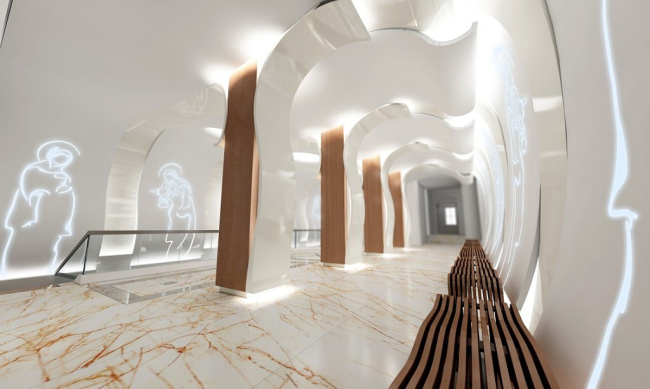 None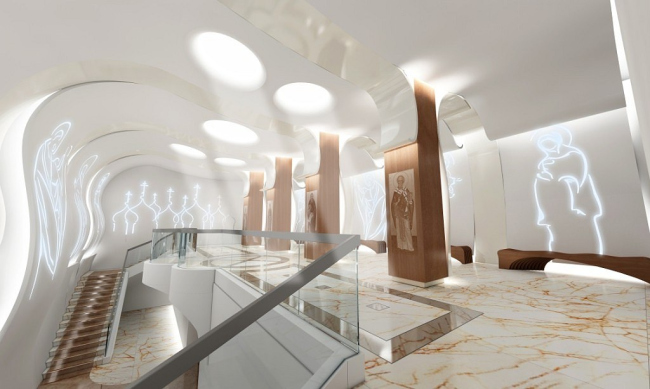 None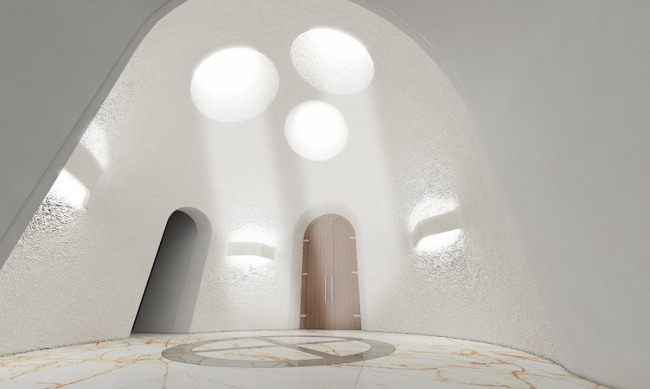 None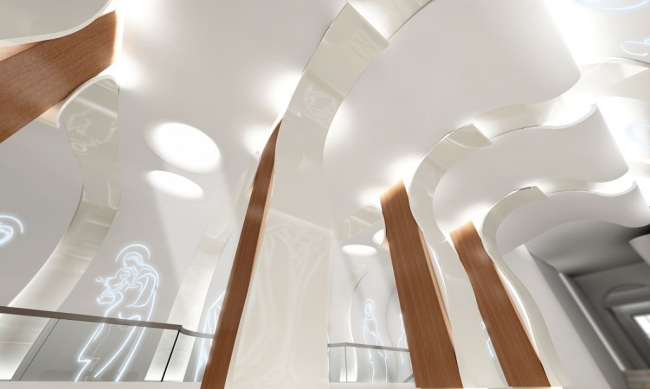 None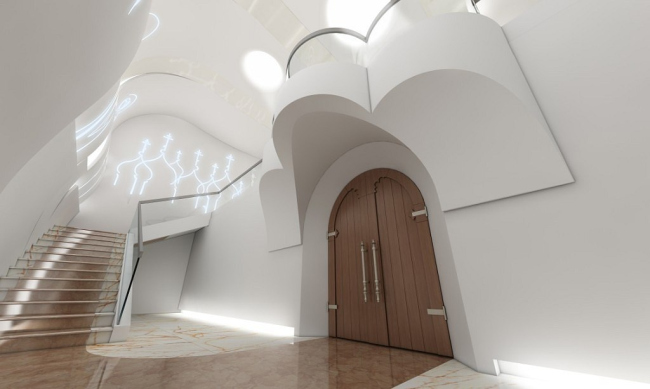 None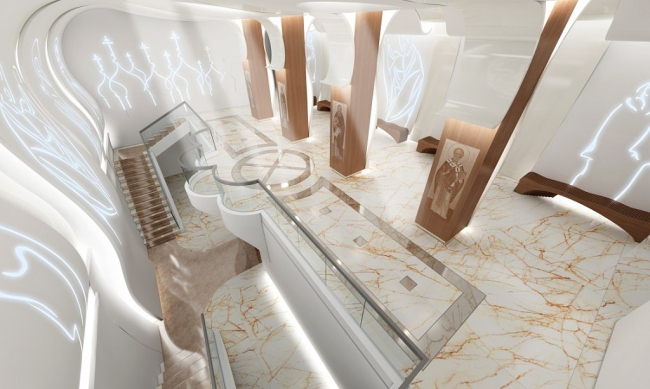 None NoneNoneNone |
|
